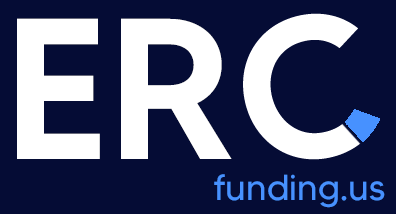
The purchase of halibut fishing quota shares, or the percentage of total halibut stock an individual may harvest on a yearly basis, is probably not a suitable enterprise for most investors. In fact, regulations on the fishing quota system in Alaska have generally been designed to protect the commercial fishing industry from outside speculation. However, fishing quotas might hold legitimate interest for investors who are attracted to commercial fishing as a lifestyle as opposed to a mere investment in fish, and who are willing to undertake a physically and financially demanding enterprise.
The individual quota program for halibut in Alaska became fully implemented in 1995 as a solution to a dangerous phenomenon occurring in the industry: a race for fish.
“The ability to go halibut fishing was largely unimpeded prior to 1995,” Gregg Williams, program head for research and management at the International Pacific Halibut Commission (IPHC), said. “Consequently we had upwards of seven to eight thousand individual fishing vessels fishing Alaska for halibut in a year, and they were fishing so incredibly efficiently that the season…was down to a number of days [and] in some cases hours.”
Although the IPHC had been put into place to establish and manage the total amount of halibut that could be harvested while ensuring the sustainability of the species, there was no system in place to manage effort and limit entry into the fisheries; as a result, halibut fishing was becoming an increasingly unsafe and uneconomical enterprise.
“We had boats sinking because [fishermen] were ignoring all common sense and…were just trying to pull as much fish on board as fast as they could,” Williams said. “Fish was not being [produced] with any kind of quality, and the price was in some cases going down—it was just a very poor way to manage a fishery.”
To put an end to the race for fish, the North Pacific Fishery Management Council established the individual quota program, where fishermen and fishing companies were granted a “share of the pie,” or a fraction of the amount of halibut that could be fished during a nine and a half month season, Williams said. Each year shareholders are allotted an amount of poundage, or individual fishing quota (IFQ) that they can fish that will vary in proportion to the size of the overall supply, established by the IPHC.
In terms of quality, the extended fishing season presented a much better alternative to “flooding the market with a huge amount of halibut,” and deflating the value by having to freeze the product, Julianne Curry, executive director of Petersburg Vessel Owners Association and a commercial fisherman, said.
In addition to protecting commercial fishing operations from unnecessary danger, the individual quota system has been designed to protect the fishing industry from speculation. The ability to own quota largely depend on the buyer’s fishing experience and access to a vessel and crew, not the sophistication of their investment portfolio.
“Our [fishing quota] system was set up to protect the industry from outside investors,” Eric Rosvold, president of Petersburg Vessel Owners Associations and a commercial fisherman, said in an e-mail interview. “The intent was to have [quota] owners on board, living and breathing the industry.”
Most quota programs in Alaska, including halibut, require that anyone wishing to own quota must demonstrate at least 150 days of experience as a member of an active harvesting crew in any U.S. commercial fishery, Jessica Gharrett, acting program administrator for the Restricted Access Management Program (RAM) of the NOAA Fishery Service in Alaska, said. The RAM division is responsible for setting the eligibility requirements for quota programs.
Furthermore, the halibut quota program encourages participation—that is, any individual who purchases quota must generally be on board in order to fish their allotted poundage. Although some individuals who were granted quota shares when the program first started are able to hire people to fish their allotted poundage, “second-generation individual holders must be on the boat themselves, with some exceptions,” Gharrett said.
Claim up to $26,000 per W2 Employee
- Billions of dollars in funding available
- Funds are available to U.S. Businesses NOW
- This is not a loan. These tax credits do not need to be repaid
Non-individual entities such as large corporations are barred from buying quota and cornering the market.
“[The] qualification process is [not] set up…so large corporations can come in and sweep up large amounts of quota,” Curry said. “The program was set up so that a very broad base of people could have access to the resource.”
On the upside, individuals who meet the program qualifications and successfully use their quota are able to enjoy unusually fast rates of return. Because high demand for halibut drives a high selling price, a commercial fisherman can start making money as soon as they harvest their quota. Curry said she is in a position to be able to pay off her loan to finance her quota share in 10 years, and that “there’s not much else you can do that with.”
Actual profit margins, however, can be irregular and unpredictable; the supply of wild halibut, after all, is not only a commercial resource—it is a biological one as well. Because halibut quota shares are purchased for any of eight specific regulatory areas off the coast of Alaska, quota share values for some areas will increase relative to others, depending on the respective growth of the stock, Williams said.
There are is also a cap on how much quota an individual can hold, which is typically no more than 3 percent of the total quota share of any regulatory area, Williams said.
Because of its informational advantage, the IPHC doesn’t release the results of their research to the public until a specific date.
“People will speculate their quota share sales or purchases based on the results of our research, and it’s gotten to the point where it’s almost like insider trading,” Williams said. “So we are very careful…to the point that we have a very specific date when we release our information so [that everyone gets] a fair start.”
In addition to possible fluctuations in supply, other risks include exposure to changes in fish prices, regulatory issues on fishing and risks to the efficiency of the operation, Jeff Osborn, a broker for Dock Street Brokers, said. There is also the physical risk that individuals face in this type of pursuit.
“Boats do sink,” Osborn said.
Limited supply and high demand for fishing quotas have been the driving forces behind a seller’s market, in which the cost of purchasing shares can be quite high.
“It’s not cheap…[although] it all depends on how much you’re buying,” Osborn said. Deals can range from $20,000 to millions of dollars, he said.
Quota shares are usually bought and sold through brokers, as with real estate and other types of property. Advertisements for fishing quota are frequently published in fishing trade journals, which are a popular source for information among commercial fishermen.
Because of the extensive risks and requirements involved inherent in owning fishing quota, not many “greenhorns,” or newcomers, are able to jump right into the industry.
“[It is rare for] people who have no experience in commercial fishing [to get] involved in these things,” Gharrett said. “It’s very hard work, and it is dangerous.”
Small investors with no fishing experience or desire to fish have limited options in terms of purchasing fishing quotas, but they can get involved with the industry by providing loans for quota purchases.
“Quota is fundable, people have used it as collateral, and banks and other lending institutions and even individuals can file liens under the uniform commercial code against the quota,” Gharrett said.
An investor who wants to fund purchases should, however, consider the competition. In most cases, buyers can obtain loans through the financial services branch of NOAA, which has programs in place for funding IFQs, or from traditional lending institutions. The halibut-sablefish loan program through NOAA provides approximately $5 million in loans a year, which are generally aimed at new participants in the program or existing participants who have small holdings of quota, Gharrett said.
The loans are long-term and rates are “very favorable,” Gharrett added.
Thus, investors could probably obtain better rates or return with other venues for financing, “unless [they] want to get into financing…higher risk fishermen,” Osborn said.
Osborn also warned that collateralizing quota share might be simple, but foreclosing on a loan is not an easy task.
The halibut fishing quota program in Alaska has become an effective way to manage complex issues such as sustaining a biological resource, managing effort of commercial fishing operations and protecting the industry from speculation. But to put it in plain terms, the “business of fishing” has been, essentially, reserved for people who fish.
“[Commercial fishing is] an important industry [and] many people in coastal communities depend on it,” Gharrett said. “Our council has in many ways explicitly and implicitly made it clear that they want revenues and benefits to stay within the fishing-dependent economies and continue to support our communities and processing plants.”
For more information on IFQ programs for halibut and other types of stock in Alaska, visit http://www.fakr.noaa.gov.



